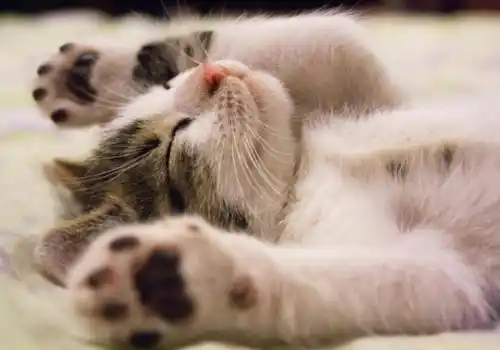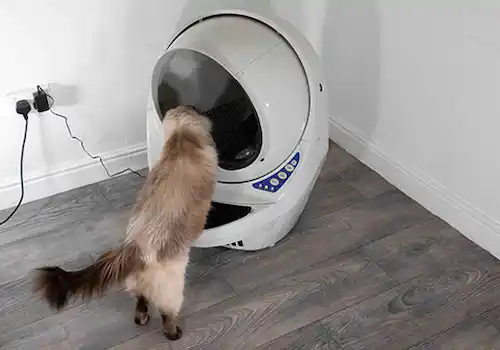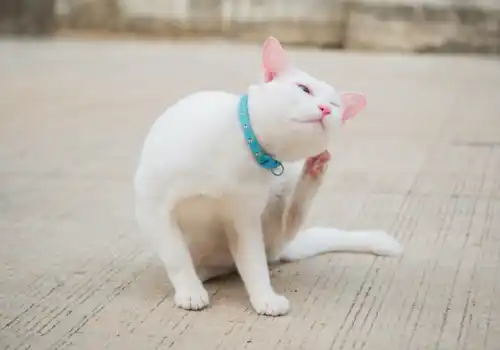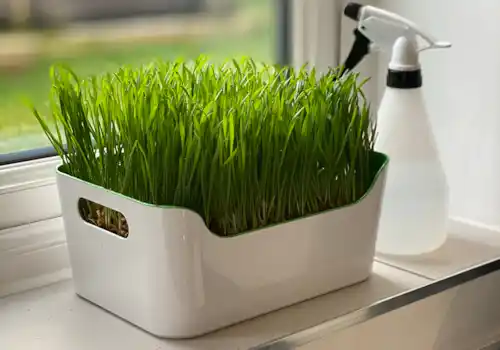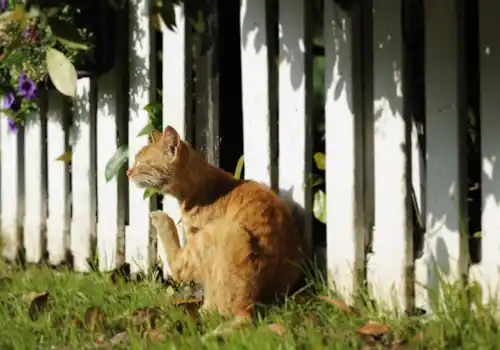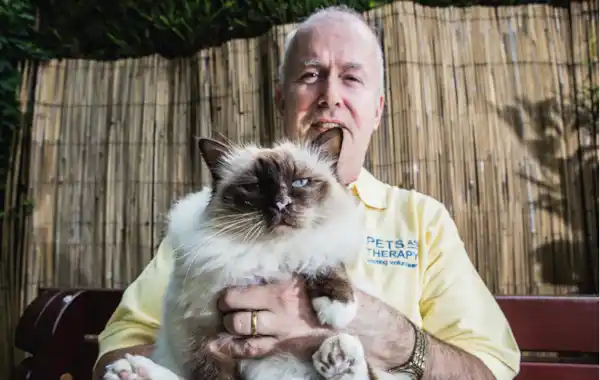In a new series, we’re looking at the incredible ways in which therapy cats help people. But just how does a feline take up this role? Kathryn Hearn finds out.
We all know how much our cats make us happy and are good for our mental health. But some cats spread this gift even further as therapy cats, visiting people who will receive a boost from a feline visitor. In our new series on therapy cats, we’re going to look at how these special cats help people in different situations — but to kick the series off, just how does a cat become a certified therapy pet?
For many cat owners, the idea that their pet would relish visiting strangers in new, busy places, and would settle down for a cuddle and a stroke, would be unbelievable.
But Pets As Therapy (PAT) has more than 80 cats in the UK, from moggies to Maine Coons, who do just this — and their visits bring comfort, happiness, and emotional well-being.
So, what makes a person decide to join the PAT cat volunteer team and how does the application process work?
For Stacey Smith, her journey to becoming a PAT volunteer started in a very dark place. Her mum, Debbie Sheehan, had terminal cancer and was struggling to come to terms with her diagnosis. The cancer was very aggressive and things looked bleak. The one light in this difficult time was her cat, George. Stacey had bought the fluffy Ragdoll for her mum in November 2019 to keep her company through these difficult days. His outgoing personality and loving character brightened up Debbie’s days, keeping her company at her home and bringing her comfort as she had rounds of hard-hitting chemotherapy.
“George and my mum formed a wonderful bond,” said Stacey, 34, from Stockport. “He loved sitting on her lap and being stroked. He’s daft as a brush and his funny ways brought smiles even when things were really hard.”
And when Debbie needed to go to appointments, Stacey would drive and George would go along with them both, relaxing into his car harness and looking out the window.
In March 2020, Debbie became very ill with distressing side effects from her cancer and was taken by ambulance to hospital. She was found to have Covid and while in hospital contracted Clostridium difficile. “My mum was very poorly,” said Stacey.
“But once she was home, she recovered with George. She was over the moon to see him again — she lit up and he gave her a real lift.”
At her side
Sadly, the pandemic meant that Debbie’s treatment had to be cancelled and her deteriorating health meant that she moved into St Ann’s Hospice in Heald Green. She loved the hospice — and even more she loved her furry visitor!
Stacey said: “When my mum moved into the hospice, George came to live with me and I would take him in to see my mum every other day. The first time he went in he was a little bit nervous but as soon as he saw my mum, he was all over her. He was on her lap and she was cuddling him.
“George got to know exactly where he was going when we got in the car and he would love seeing my mum. He would be on her wheelchair, out with her at the smoking area, and lying on her bed for attention.”

